The combat planes built between June 1940 and July 1941 conformed to a standard with gloss green uppersurfaces and gloss light blue undersurfaces.
This change was related also to the development of new alkyd paints A-18f light blue and A-19f green for metal, and the introduction of AII light blue nitrocellulosic lacquer for wooden/fabric undersurfaces aside AII green already in use for uppersurfaces.
A new directive tried to make some order in the national insignas: before 1940 were used plain red stars, or red stars with black border, or red stars with black borders and thin black circle inside; in 1940, only red star with black outline became the official insigna.
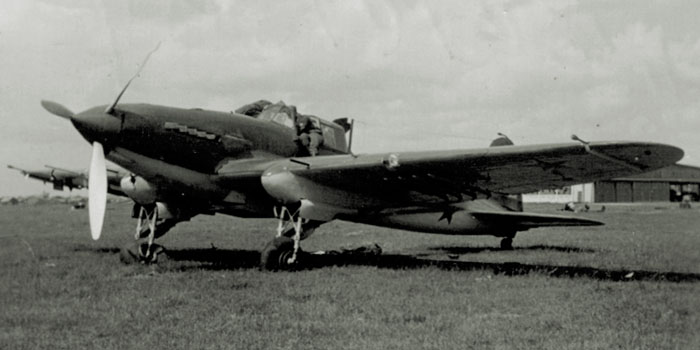
Typical early production Il-2 had these characteristics:
- single-seaters with reduced armour on the cockpit;
- armorglass instead of steel armor behind the pilot;
- slightly reduced armour on the sides of the sliding hood (less than half of the total length of the hood);
- PBP internal gunsight without any external aiming device;
- no protection stripe over the spinner-fuselage junction;
- low-profiled fuel tank behind the pilot (rare, on very early ones only);
- all metal wings of early type, with a ShVAK 20 mm gun posed inside a ShKAS 7.62 mm machine gun on each wing;
- metallic ailerons;
- landing lights on both wing leading edges;
- balancing weights both on the wingtips and under the ailerons;
- AM-38 engine with unfiltered intake at the right wingroot;
- small tailwheel (typical of all single-seaters) often with flexible boot;
- 4 rocket rails under each wing.

The Il-2 was intended to have a wooden back fuselage, covered with a fabric skinning glued on.
Despite of this, only a small part of prewar Il-2s show the wooden rear fuselage; perhaps they were built by Zavod 381 in Leningrad and Zavod 35 in Smolensk, but they build only a very limited number of planes; in facts, Zavod 381 was soon evacuated to Nizhniy Tagil and Zavod 35 was captured by Germans.
Il-2s with wooden fuselage can often be recognized in photos because:
- the nitro paint utilized on the rear fuselage (AII green) and elevators was darker than the A-18f alkyd paint utilized on the metal parts, as visible here; at the same way, the AII blue utilized on wooden parts was darker than the A-18f utilized on metal parts; all these paints were glossy when new;
- the wooden surface was very smooth, without paneling;
- on wrecked planes, the skinning is often peeled off by German souvenir hunters
According to the prewar use, the prop blades were left unpainted aluminium on the front face, and painted black on the rear face (not to their root).
The plane of this photo aside was captured by Germans in the first days of war on the Vilnus airport. The bort number is irregular, it could be brush painted with badly mixed silver paint.
Below: a drawing of Silver 2
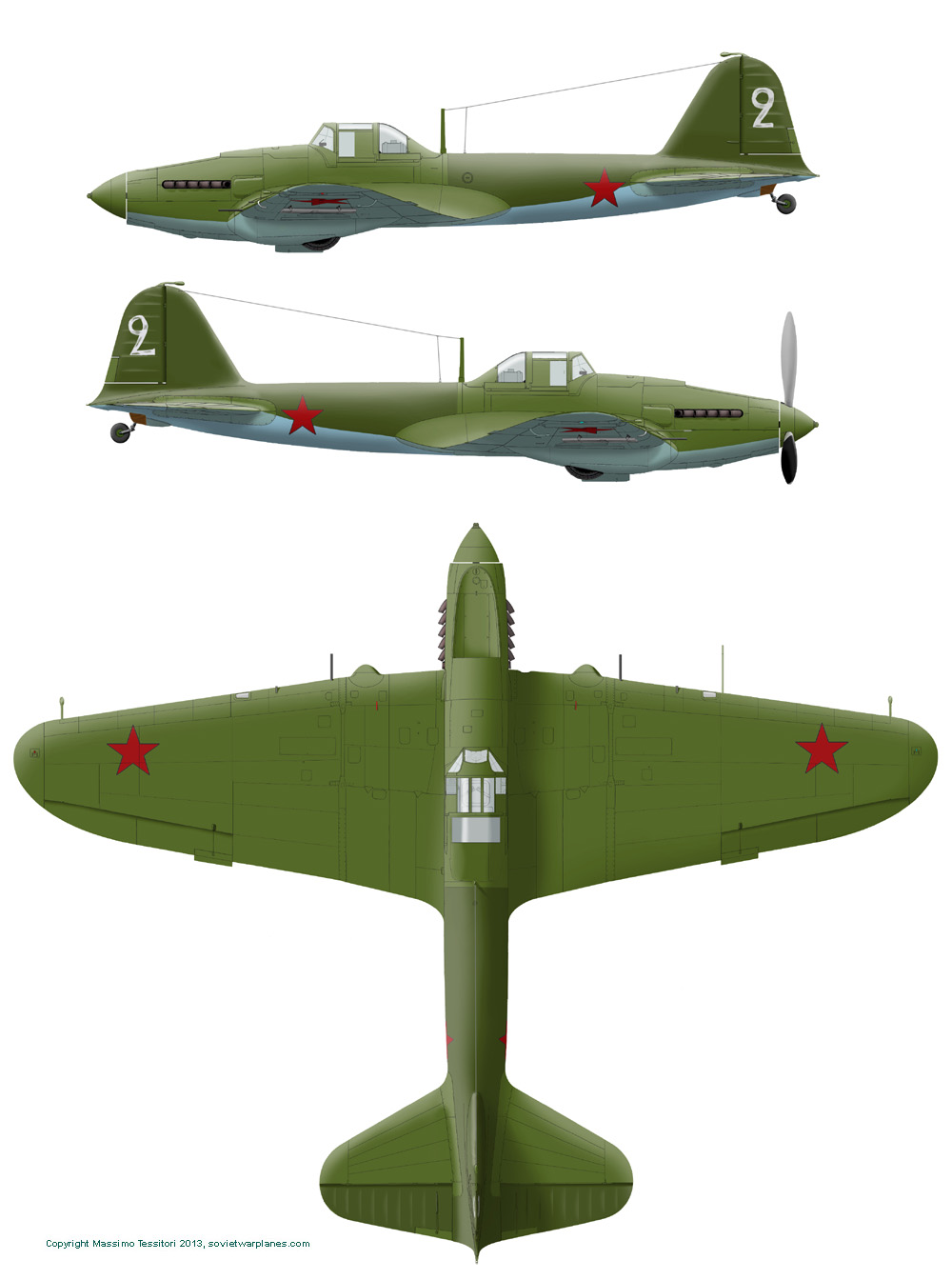
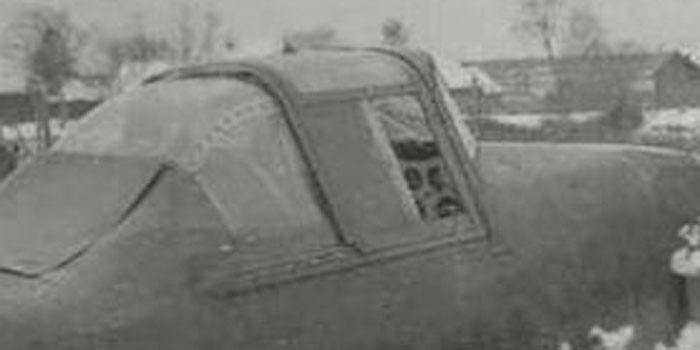
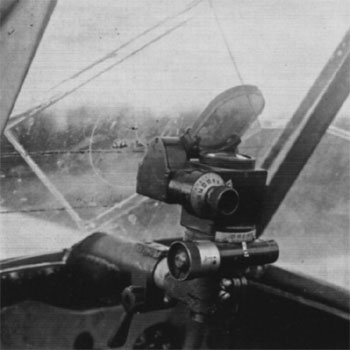 Left:
an image of the early type canopy shows that the rear window was made
with three clear panels joined by rivets.
Left:
an image of the early type canopy shows that the rear window was made
with three clear panels joined by rivets.
Under the glass, we see the tall-type tank introduced in spring 1941.Note the light-painted instrument panel.
There was not a metallic armoured backrest behind the pilot's head, but a wide armorglass.
Right: PBP-1 internal gunsight of early Il-2s. It was not fully satisfactory, so sometimes it was removed and the plane utilized without any gunsight.
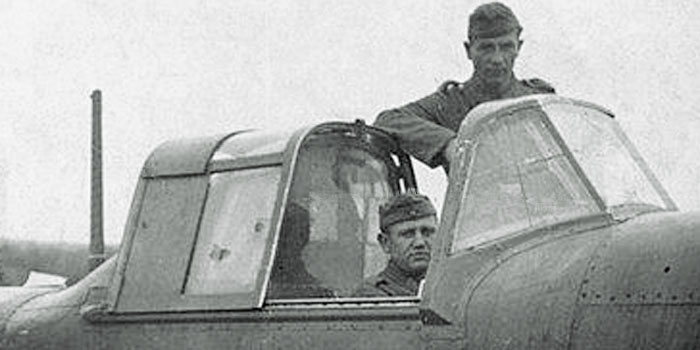
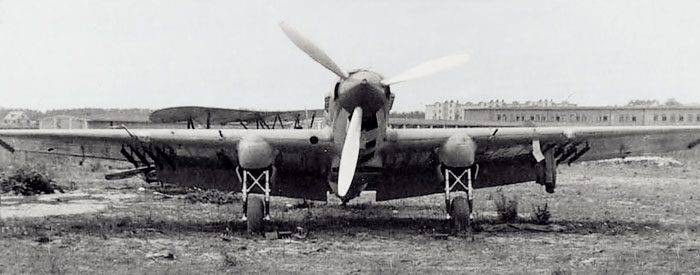
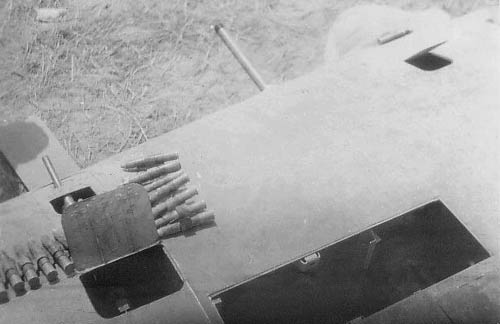
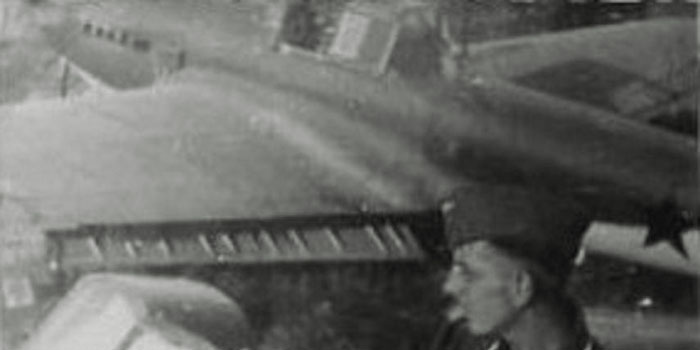
A detail of an early Il-2 with wooden rear fuselage. The difference in shade with the metallic parts is well visible.
The detail of the ailerons of the metallic wing shows a different inner face than on later wooden-wings Il-2s.
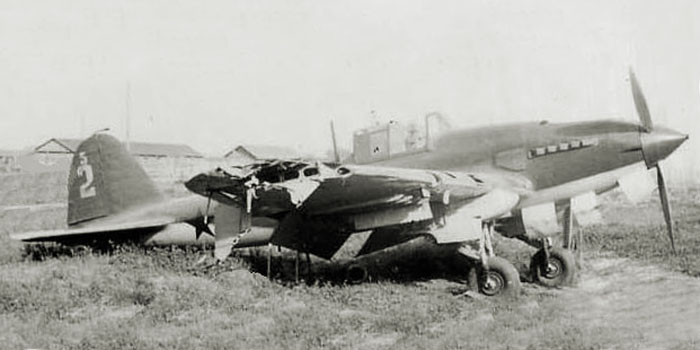
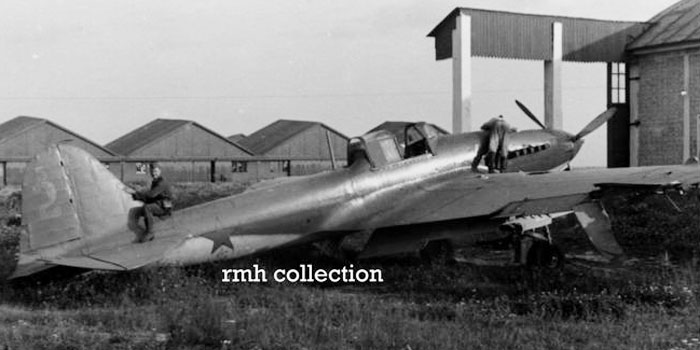
Photos of an Il-2 of 4th ShAP captured on the airfield of Old Bychau in summer 1941.
The most of prewar-style Il-2s are known only from photos taken by Germans to planes captured or wrecked during the first weeks of war.
The most of these photos show planes with metallic rear fuselage and stabilizator, that are recognizable because:
- the green painting appears uniform between front and rear fuselage;
- the light blue appears uniform between the rear fuselage and tail fillet;
- both stabilizator and rear fuselage show horizontal ondulations due to riveting and sheets junctions.
In facts, these planes were all built in Zavod 18, that was the only one authorized to produce some hundreds of planes with metallic rear fuselage as an interim measure because it lacked of tools and experience for the wood manufacturing.
Prewar Il-2s, of all-metal construction, were painted with alkyd paints:
- A-19f gloss green on upper and side surfaces
- A-18f gloss light blue on undersurfaces.
This early Il-2 damaged and captured by Germans is similar to the drawing above. Note the code made by numbers 5 and 2.
Before the war outbreak the bort numbers were usually painted on the rudder in many colors: white, red, blue, dark red, light green-blue etc. Yellow was very utilized before the war outbreak, but its use was much reduced after the summer 1941 because it was the distinctive color of the axis forces.
Below: a drawing of 5-2.
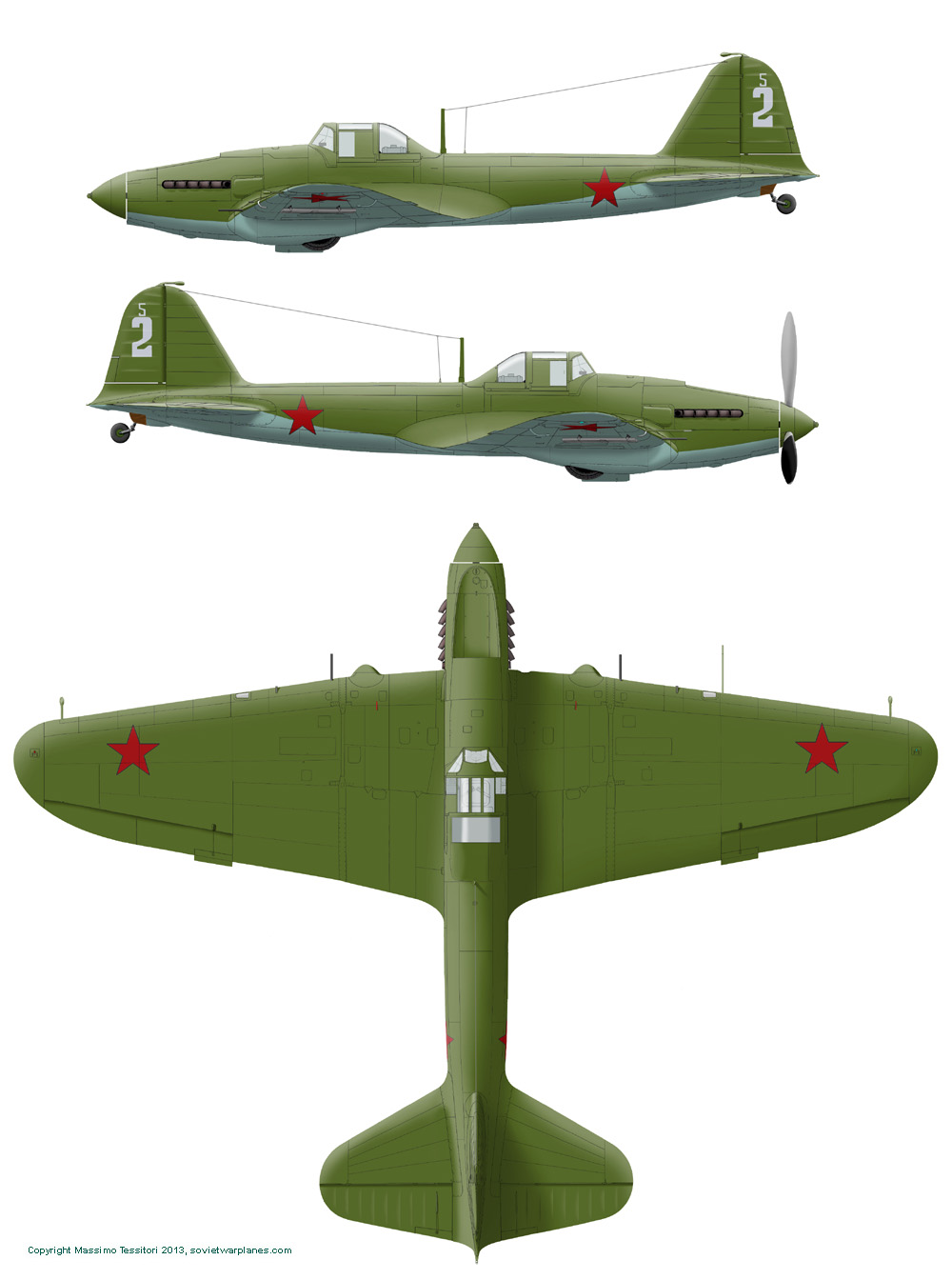
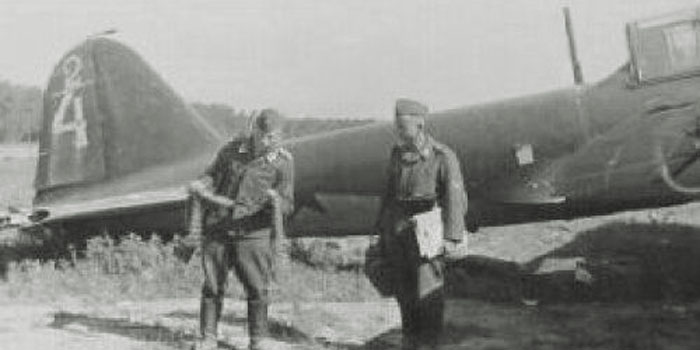
Plane 4-2 of 4th ShAP captured on the airfield of Old Bychau in summer 1941.
It looks similar to the previous one; the numbers seem painted with washable paint, and separed by a thin white line.
A drawing of 4-2.
Click on the profile to see a larger 3 views drawing.


Plane n-3-6 of 4 ShAP resembles to 2-5 and 4-2 of the same unit.
The numbers seem painted with washable white paint, because they have a lighter trace below them.
The rudder can give the idea to be painted with a lighter color, but probably this is only an illusion due to the light.
Another photo of the same plane, where the rudder looks exactly as all the uppersurfaces. Some parallel shades on the fin suggest a metallic rear fuselage.
A drawing of 6-3.
Click on the profile to see a larger 3 views drawing.

These photos show images of the tail of a wrecked Il-2 of the 4 ShAP. The inscription on the rudder looks C-9 (the C being for S in cyrillic alphabet)
Thanks to Vitaliy Timoshenko.
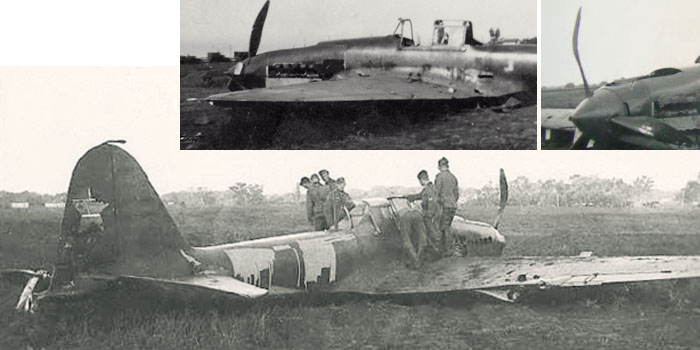
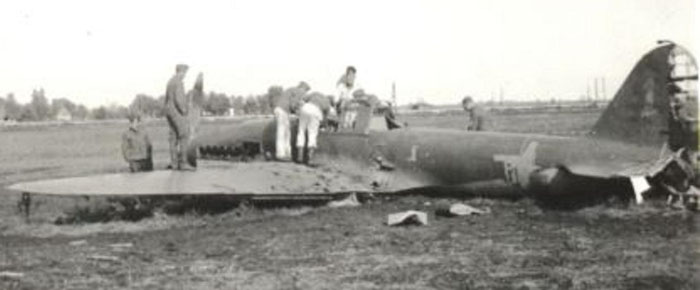
Il-2 of 299 ShAP belly landed in Poltava area, Kremenchug distict, Potoki village, near the Psyol river, Ukraine.
It is an early Il-2 with wooden rear fuselage and modified overall green finish.
An apparently unusual characteristic of this plane looks the small red star on the rudder, that was cutten away by souvenir hunters on both sides.
Other characteristics are the black painted propeller, the dark green repainting on the spinner and part of the cowling, the darker green color of the engine cowling, and the apparent deletion on the stars over the wings; anyway the plane doesn't seem camouflaged, only retouched.
The fabric skinning on the fuselage was stripped down by Germans, and shows the underlying yellowish putty on the wood.
This image of the same plane shows the 1 on the rudder; the mumber is roughly painted and has a low contrast with the green background, so it could be red.
In other photos, the number is nearly invisible.
Some repaintings with a darker green are visible around the number.
A drawing of this plane.
Click on the profile to see a larger 3 views drawing.

Another Il-2 n.2, this one of 74th ShAP in Bobruisk airfield in Summer 1941; the number could be in yellow or blue.
The rear fuselage looks metallic because of some regularly spaced shadows of junctions on the stabilizer and the lack of difference in shades between the front and rear fuselage.
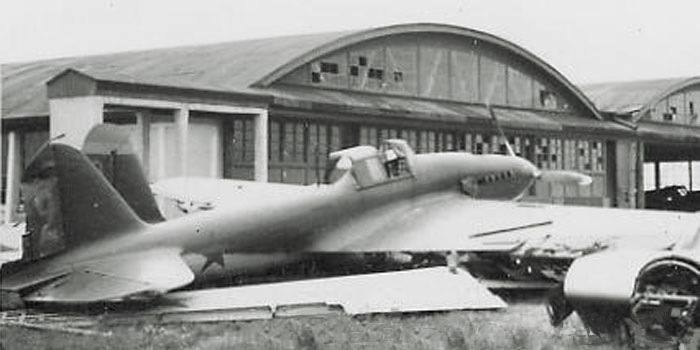
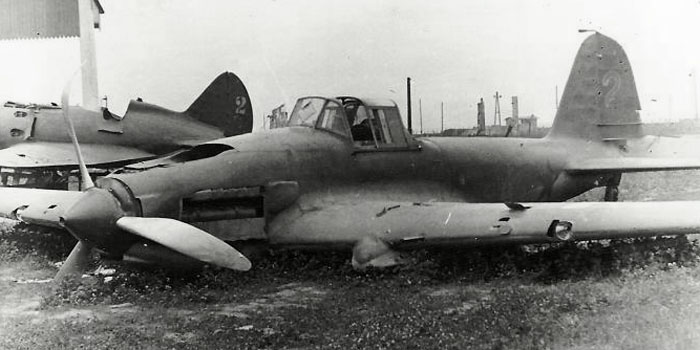
Another early Il-2 'red(?) 2 with white outline' with all-metal rear fuselage. Old Bychau air base, 4th ShAP.
The early low type fuel tank is visible through the armorglass behind the pilot's seat.
The unpainted front of the prop blades is clearly visible.
The landing gear light on both wing leading edges is a characteristic of all the planes with the 1941-style metallic wings.
The ShVAK 20 mm guns protrude directly out of the wing skin close to the landing gear necelles, and the ShKAS barrels protrude outside over the leading edge.
Despite the spinner being damaged, we see that there is not any stripe of sheet that covers the gap behind the spinner from above, a characteristic introduced shortly after the war's outbreak.
A drawing of red 2.
Click on the profile to see a larger 3 views drawing.
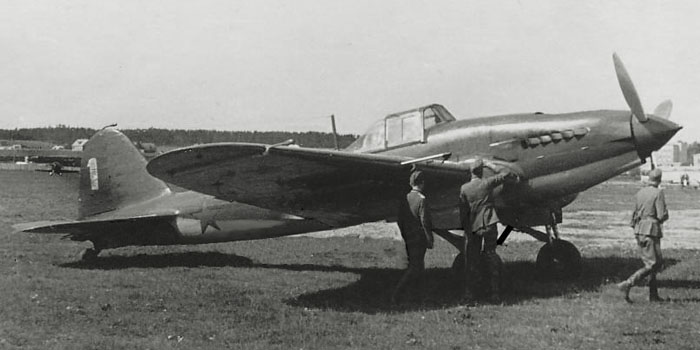
Il-2 n.1 of 61th ShAP captured by Germans on Vilnus air base. The number 1 seems light blue or yellow with white outline.
The regularly spaced shadows on the stabiilizer reveal a metal skinning as on the most of the Shturmoviks of 1941. It has a flexible boot on the tail wheel as it looks usual on early production Il-2s.
Note the position and size of the red star under the wing.
A profile of this plane.
Click on the profile to see a larger drawing.
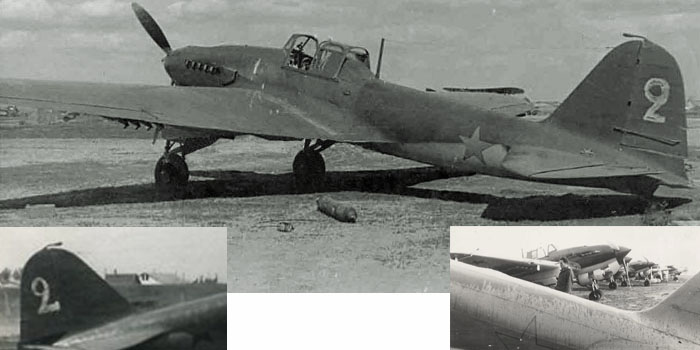
Silver (?) 2 of 61 ShAP was captured by Germans on the Rorubanek airport in Vilnus, aside planes 1,3,4,5.
Plane n.2 has a wooden rear fuselage, easily distinguishable on the photo for the change in the shade of green at mid fuselage: A-18f on metallic parts, the darker AII green on wooden parts; similarly, light blue A-19f on metallic undersurfaces and the darker AII light blue on wooden surfaces.
The photo reveals a flexible boot on the tail wheel leg.
The first detail shows that the numbers on the rudder were not only roughly executed , but asymmetrical too.
On the second detail, silver 2 is probably one of the planes on the background; the closer plane, probably blue 1, seems the only one to have a metallic rear fuselage.
A profile of this plane.
Click on the profile to see a larger drawing.
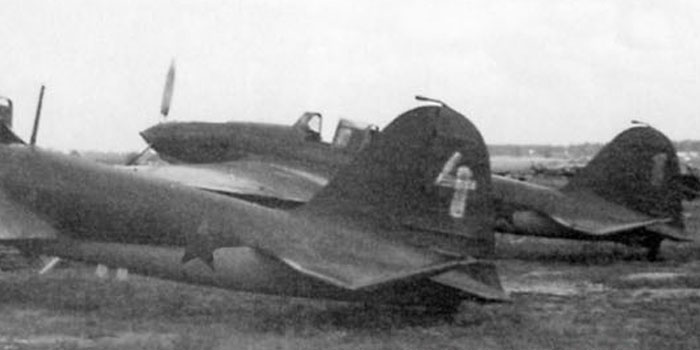
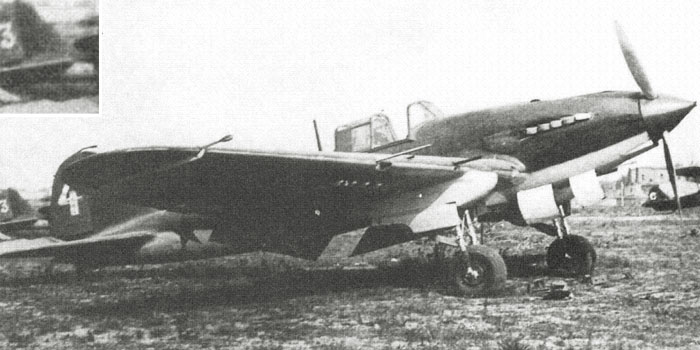
Silver (?) 4 and blue (?) 1 of 61 ShAP are side by side on the Rorubanek airport in Vilnus just after the German invasion.
Note how rough is the number 4, hurrily executed with scarcely covering paint.
Plane n.4 seems to have a wooden rear fuselage as n.2 and, probably, n.3 and 5 that have the bort numbers painted in the same style, so probably they were delivered to the unit in the same stock.
Another image of plane n.4.
The tail of the similar plane n.3 is visible on the background.
Profiles of planes 3 and 4.
Click on each profile to see a larger drawing.

Silver (?) 5 of 61 ShAP was captured on the Rorubanek airport in Vilnus aside planes 1,2,3,4.
The detail shows the different shape of the number painted on the other side of the rudder.
Thanks to V. Timoshenko
A profile of this plane.
Click on the profile to see a larger drawing.

Two rare images of a flying Il-2 white 22 with the prewar style livery.
Strangely, it looks that this plane had not the rocket rails under the wings. It seems to have the early, lower type of fuel tank behind the pilot's seat.
Note how shining was the propeller from the front.
A profile of white 22.
Click on the profile to see a larger 3 views drawing.
Just some weeks before the war outbreak, an unclear order to camouflage planes was issued, but without precise instructions. In general this order was ignored till a following and more clear order of June 20, 1941, but in some cases it led to interesting non-standard camouflages of difficult interpretation on the base of the original green livery.
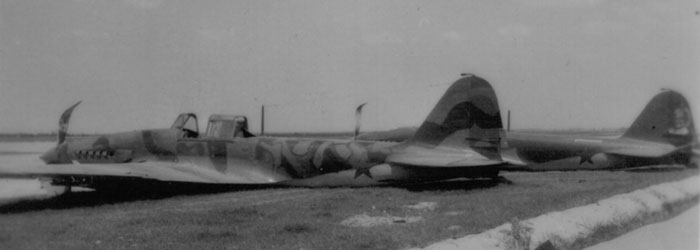
A pair of Il-2 at Shatalovo airfield, Smolensk region, when invaded by Germans; the photo was taken on 15/08/41.
The first plane wears a fantasious camo on the base of the all-green livery.
.On the background, another Il-2 with uniform green uppersurfaces. Traces of vandalization are visible on the rudder and on the rear fuselage, where the stripping of the fabric layer covering the wooden skinning let see the yellowish putty.
The planes were of early type, with early metal wings and canopy; the second one has certainly a wooden rear fuselage.
An attempt to trace the camouflage of the first plane.
To know see further photos and drawings, click on the profile.

The plane yellow (?) 10, the same on the background of the photo above, was photographed at Shatalovo airfield, Smolensk region, in August 1941.
It has a fully ordinary painting and a wooden rear fuselage, revealed by the stripping down of part of the fabric layer that lets to see the underlying yellowish layer of putty.
The tank behind the pilot is of 'tall' type.
The '0' is divided in two parts, probably because painted with the help of a stencil.
A drawing of Yellow 10.
Click on the profile to see a larger 3 views drawing.
An higher resolution version of the artwork will be published on the book on Il-2 of Jason Moore.

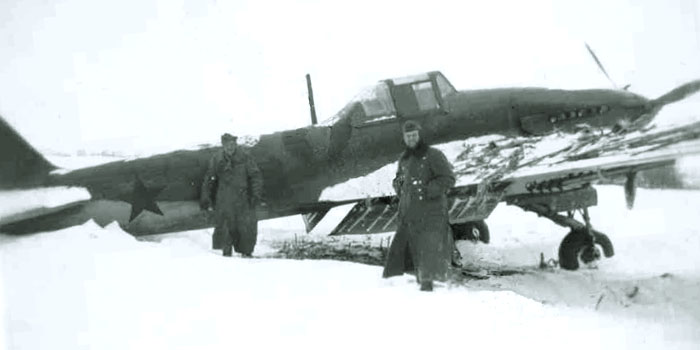
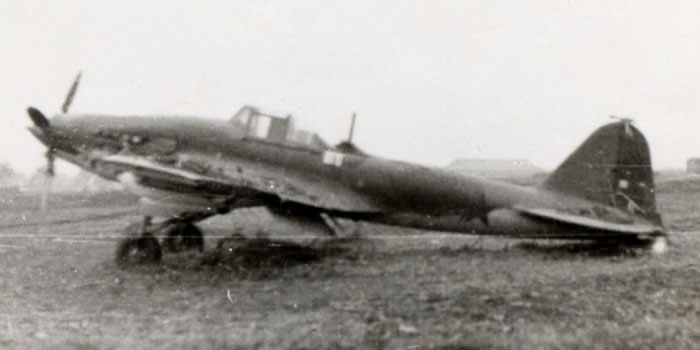
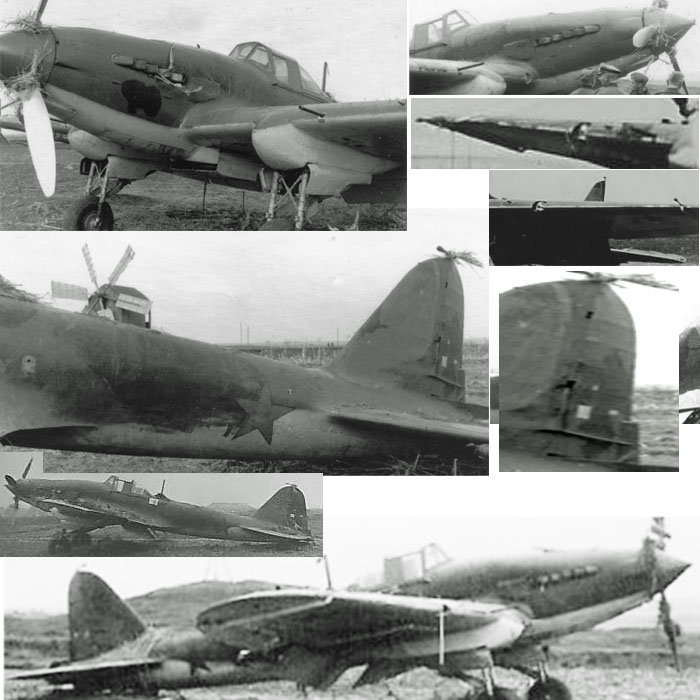
Collection of images of a prewar-built plane with a confused pattern of low contrasting blotches.
The blotches seems made on the easy accessible parts of the plane, and doesn't seem to have continuity from one side to the other one.
It could be a camouflage made with 3 colors over a dark green base (perhaps the original one, or repainted with matt dark green), that hypothetically include 3e light brown, 3ng dark brown and black. It could be a rough attempt to comply the order of camouflage of spring 1941.
A small (red?) 2 is visible on the top of the rudder.
The shape of the tank visible through the rear windows is of the 'tall' type.
Thanks to Vitaliy Timoshenko for his help in collecting those images.

A profile with an attempt of reconstruction of the look of the plane photographed above.
Click on the profile to see a larger 3 views drawing.
Of course, the uppersurfaces aren't visible in photos, and their representation is a pure guess.

A crashed Il-2 with metallic rear fuselage.
There is evidence of a field applied camouflage with a wide section of the rear fuselage painted black.
The nose has some dark blotches too, but the front of the propeller blades is still in natural metal.
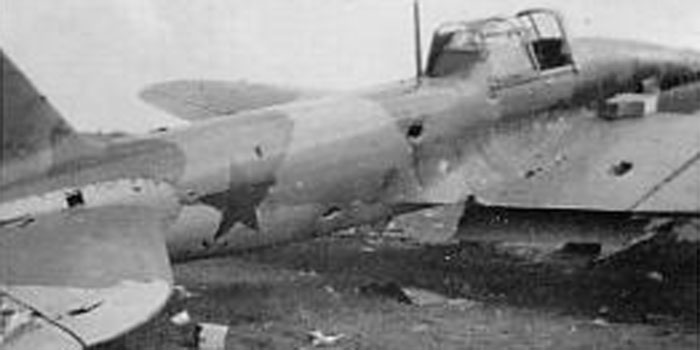
An early Il-2, belonging to the 430 ShAP at Shatalovo.
It wears a multiple shades camo, executed by brush with glossy colors probably over an A-19f green base. The stars over the wings look deleted.
The added-on colors could be a light brown (ex. the 3ie of the army), a dark green ( ex. 3B of the army) and black.
The right fillet of the stabilizer seems to have been replaced after the repainting of the plane.
(Image via A. Ruchkovsky)
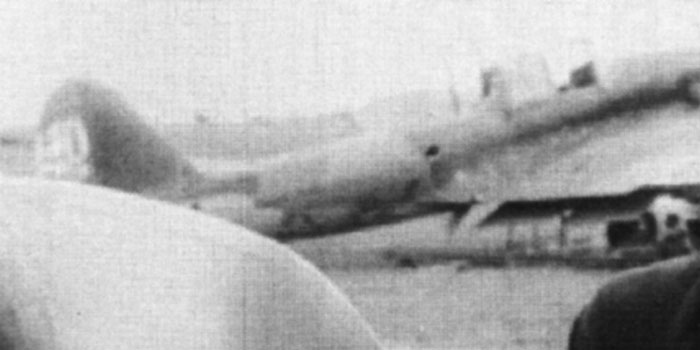

This image shows part of the tail; the bort number White 10 is readable.
The confused light stripes on the rudder are probably due to the stripping off of the fabric skinning.
These images of the plane in a further state of decay show something of the complex camouflage on the stabilizer.
Images from the web, via Vitaliy Timoshenko.
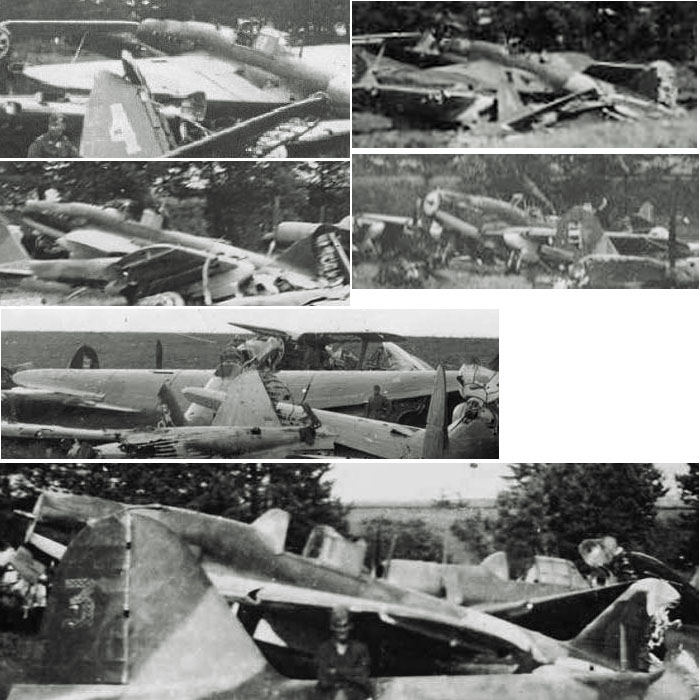
A reconstruction of this plane.
The replacing of the fillet of the right stabilizer has been ignored.
Click on the profile to see a wider 3-views drawing.
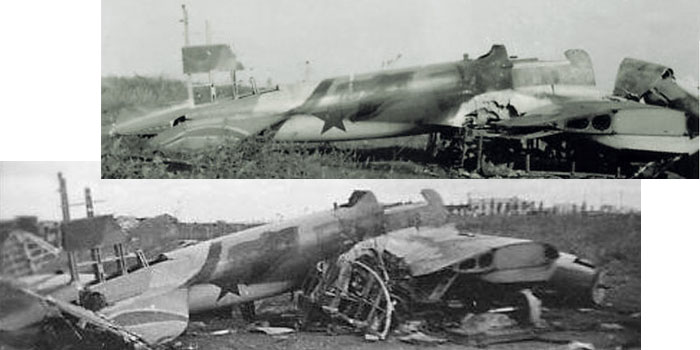
Kirovograd, September 1941.
Interesting camo on the uniform green base of an early Il-2. The added colors could be light brown, dark brown (tank colors) and black on a green base.
Unfortunately the plane is very uncomplete, so any use of these images require a lot of guessing.
An artist's impression of this plane.
Click on the profile to see a wider 3-views drawing.

This plane looks an early one with improvised camouflage. It could have something in common with the plane photographed above, but their conditions are well different.
At least two shades have been painted on the original green background. The prop blades have been repainted black. No any red star appears on the fuselage, nor on the tail.













